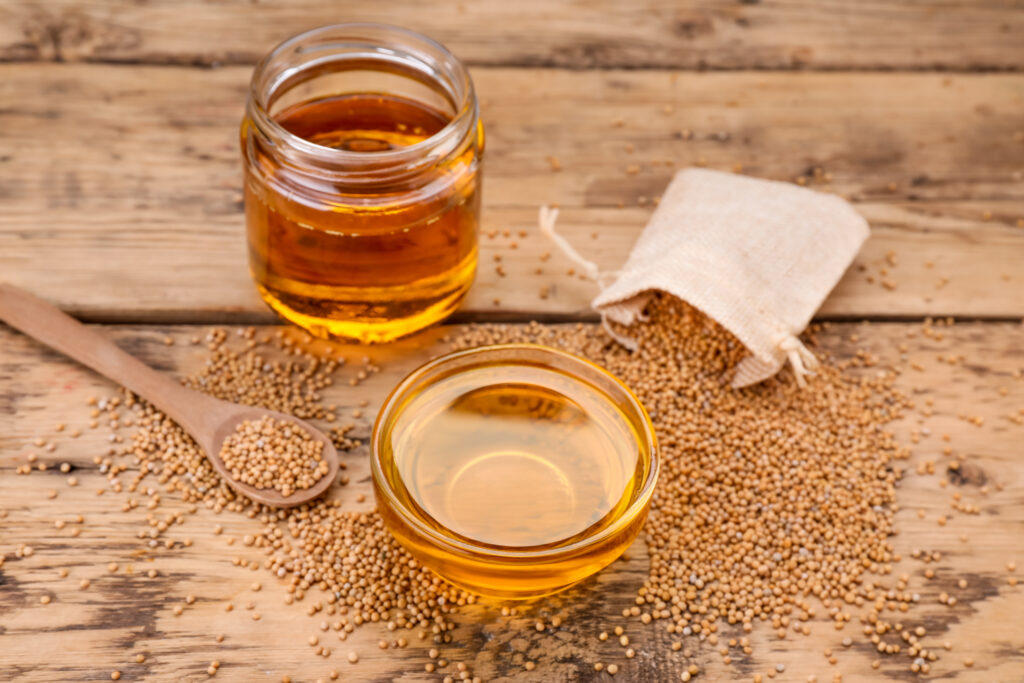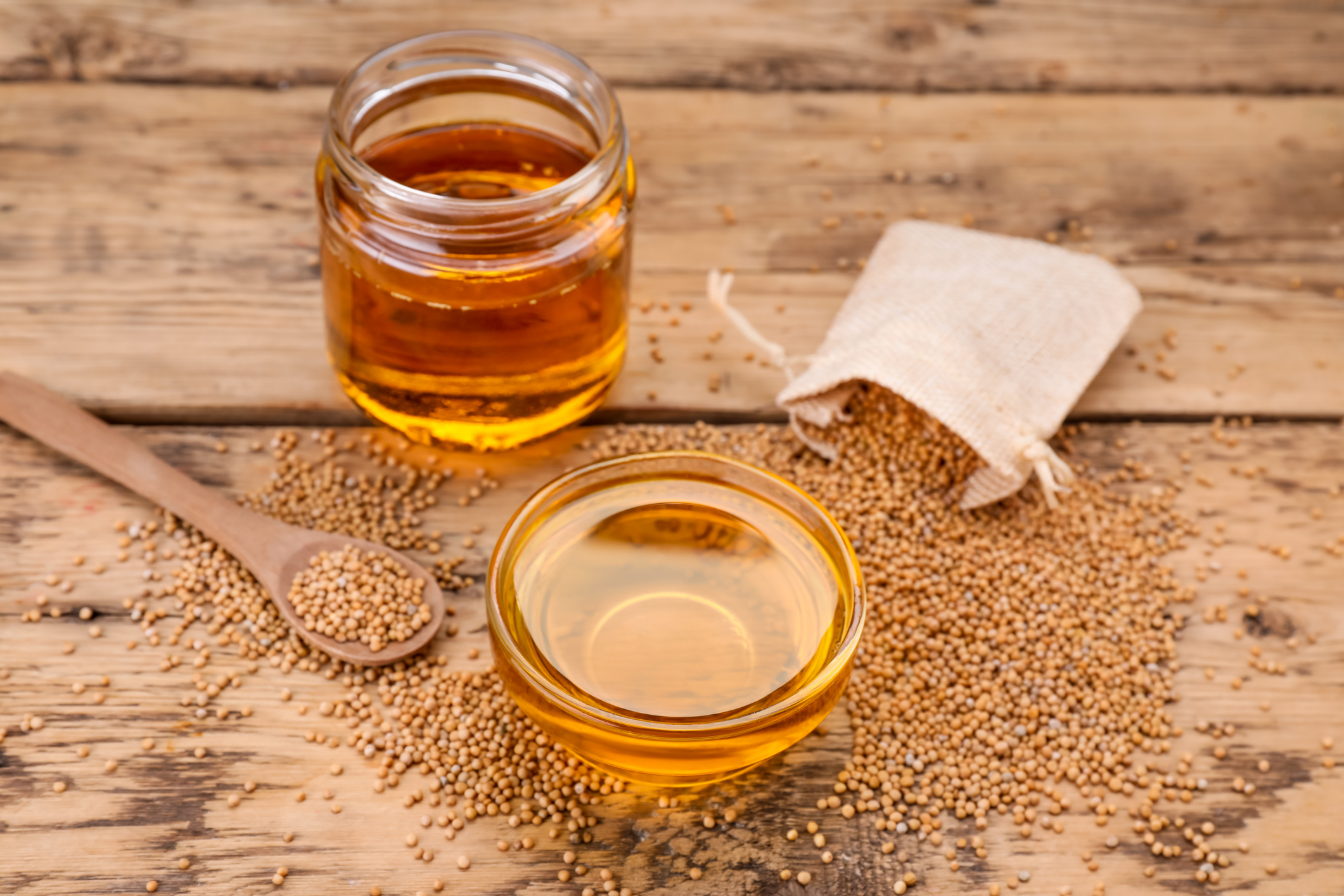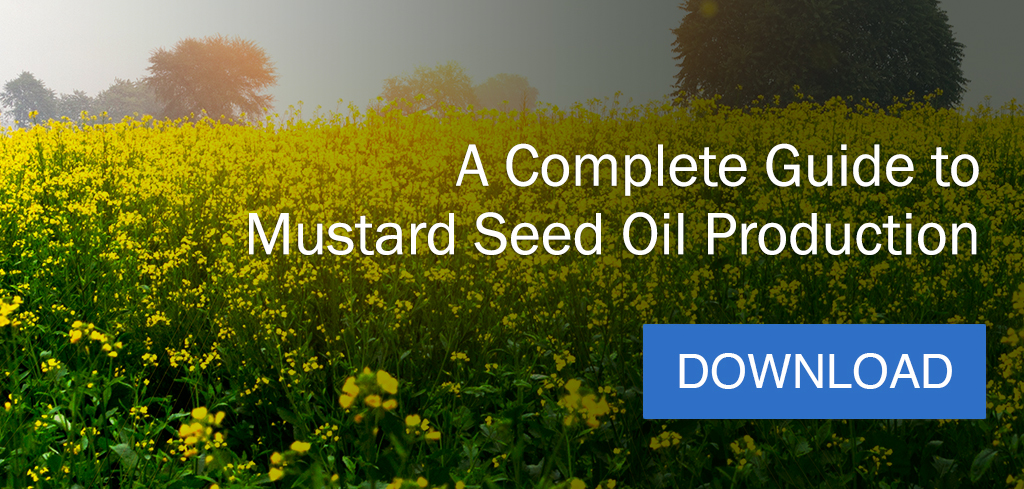
The small but mighty mustard seed is perhaps best known for its namesake yellow condiment, but it’s not as widely recognized as a valuable source of oil. While mustard seed oil has a long history of use in food, medicinal, topical, and industrial applications, some of its bioactive compounds limit its popularity (and even its legality) as an edible cooking oil.
Although some Asian countries, including India, Thailand, and Pakistan, rely on edible mustard oil for cooking and frying many signature dishes, other countries like Canada and the U.S. have banned its use for human consumption.
So, why all the controversy? To understand the debate, we must closely examine mustard’s unique oil composition, benefits, and risks.
A brief history of mustard and its uses
Since the Stone Age, diverse civilizations have used mustard as food and medicine, making it one of the world’s oldest known spices. Ancient Romans likely developed the earliest version of the classic condiment we know today when they combined ground mustard seeds and unfermented grape juice to create a tangy sauce. Mustard takes its name from the Latin phrase, mustum ardens, meaning “burning must,” which refers to the spicy heat of the seeds combined with the juice, known as must.
Through the centuries, mustard makers concocted new versions of the condiment by mixing different seed species with other ingredients to make a sauce. For example, two men from Dijon, France, combined brown mustard seeds with white wine to create Grey Poupon Dijon in 1866. By the turn of the 20th century, an American named Francis French made a milder version using white mustard seeds, vinegar, and turmeric to give mustard its now iconic yellow color.
Instead of being ground into a paste for the condiment market, the seeds can also be pressed to extract. Besides its characteristically pungent flavor and aromas, mustard seed oil has various other uses because of its unique fat profile and nutritional and functional benefits.
High levels of monounsaturated fats, balanced ratios of omega-3 and omega-6 polyunsaturated fats, and low concentrations of saturated fats make mustard seed oil heart-healthy. These fatty acids also give mustard seed oil anti-inflammatory, anti-bacterial, and analgesic properties, making mustard oil useful in cosmetic and pharmaceutical formulations such as ointments, soaps, and moisturizers.
But, as it turns out, some of the compounds that give mustard seed oil its beneficial properties could actually make it toxic in high doses.
Toxic compounds in mustard
In the 1950s, research revealed that the sharp flavors and intense aromas from mustard and rapeseed oils came from compounds like erucic acid and glucosinolates. These compounds are found in most members of the mustard family, including other aromatic plants like horseradish and wasabi. When ground or crushed, mustard seeds release these compounds, which act as the plant’s natural defense against pests.
Early research suggested that high concentrations of erucic acid could cause heart conditions in mice. Although the effects on humans haven’t been studied (particularly at the relatively low doses of mustard that most diets include), regulatory agencies started cracking down on erucic acid—targeting mustard seed oil, which contains far more of it than other plant oils, as much as 46% by weight.
The Food and Drug Administration (FDA) banned edible mustard oil because of its high erucic acid content, requiring that any mustard seed oil sold in the U.S. must be labeled “for external use only.” While these bans prompted mustard oil’s use in other applications, like skin and hair care formulations, other countries around the world still rely on mustard oil for frying, seasoning, and pickling their food.
To address the food safety concerns surrounding edible mustard oil, ongoing research and development aims to lower its erucic acid content—like when Canadian researchers developed a low-erucic acid cultivar of rapeseed in the 1950s that they named canola (short for Canadian oil with low acid.)
The FDA has approved one brand of edible mustard seed oil that’s produced from a cultivar bred explicitly for its low levels of erucic acid. As innovation continues throughout the oil industry, regulators may reconsider the bans on mustard oil.
Producing quality oil
Like rapeseed and canola, mustard oil seeds contain up to 45% oil by weight. Extracting this valuable oil can be challenging because the tiny, round seeds roll around inside the equipment. Proper pretreatment includes crushing or cracking the grains to break up their structure and then cooking and drying to condition the roots for pressing. Heat treatment is critical to release the oil from the cells and deactivate the enzymes that break down glucosinolates into potentially volatile compounds.
Because of mustard seed’s high oil content, it’s difficult to extract all the oil in a single pressing. Many processors press mustard seeds twice or thrice to squeeze out as much fat as possible. To simplify this process, the Anderson Super Duo™ Series Expeller® uses a unique dual-press design to crush high-fat seeds twice in a single pass, eliminating the need for multiple presses.
Traditionally, processors used stacked cooking and heating vessels to steam-heat flaked mustard oil seeds before pressing. Now, high-shear extrusion provides a more efficient, cost-effective solution. The Anderson Dox™ Extruder quickly cooks, dries, and shears mustard oil seeds in one streamlined step—eliminating the need for multiple pieces of energy-draining equipment. Without using expensive steam heat or harmful chemicals, the Extruder rapidly cooks seed material without degrading the quality of the oil.
An extrusion system like the Dox can double the capacity of the expeller while reducing oil residuals to 5%, enabling mustard seed mills to minimize their equipment footprint and lower energy costs while maximizing capacity. Because no harmful chemicals are involved in this process, unlike solvent extraction, which involves soaking mustard oil seeds in hexane, mechanical processing provides the safest, most natural way to extract mustard seed oil.

